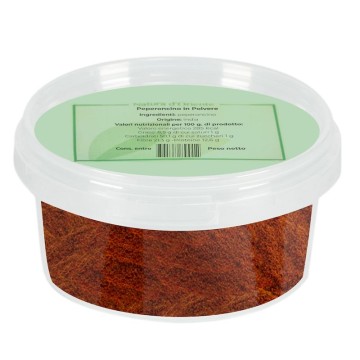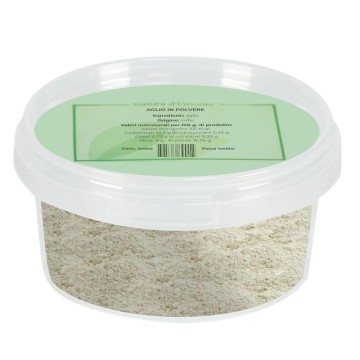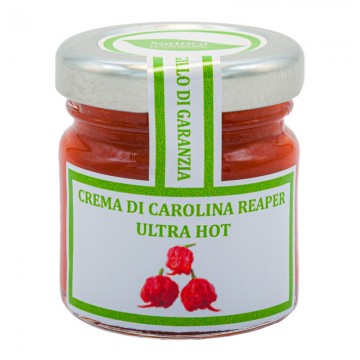Ground cumin, properties and benefits:
The properties of this spice are truly numerous and contain many vitamins and minerals useful for our health. Cumin seeds are rich in vitamins, C, K, P and above all in group B vitamins. As regards minerals, this spice is rich in iron, calcium, phosphorus, manganese, magnesium and potassium.
Cumin is effective in lowering and stabilizing excessively high blood sugar levels in people suffering from diabetes. It also keeps the risks of having high blood sugar levels under control, for example diabetics are more exposed to the formation of cataracts. Some studies by Indian researchers have highlighted these benefits of cumin in diabetic subjects especially with regards to the alleviation of complications due to diabetes, and they have also done in-depth studies to see if cumin was effective against osteoporosis, a disease that causes the rarefaction of bone tissue.
These seeds contain a lot of iron, which is an essential component of hemoglobin, which transports oxygen not only to the lungs but also to all the cells of our body. This substance cannot be missing for the correct functioning of the metabolism and for the production of energy. Cumin has volatile oils with powerful anti-inflammatory and antioxidant qualities and these substances are supported by the vitamins possessed by this spice, vitamin C and A.
These properties make it a useful weapon against the most fearsome of diseases: cancer. Studies conducted on animals have shown that cumin prevents the formation of colon cancer and reduces the incidence of cervical, stomach and liver tumors. A pathology that cumin is able to control are epileptic seizures as shown by studies on animals affected by this disease.
The effectiveness of cumin seeds in cases of food poisoning has been known for centuries and it has been found that this is one of the most effective spices for blocking this harmful phenomenon produced by particular bacteria.
Origins and history:
The small dark seeds of Cuminum cyminum are very similar to those of fennel from which they differ in shape , thinner and elongated, due to the color, which tends towards burnt sienna and not yellow-greenish, and due to the spicy aroma.
Its plant is native to western Asia, where it has been cultivated since the time of the pharaohs, who adored its taste already in biblical times; in fact even today the major producing countries are India, Iran, Indonesia, China and the southern Mediterranean. In Italian cuisine it represents a very rare and rarely used spice, contrary to what happened at the time of Ancient Rome, while in the rest of Europe we find it in the dairy sector among the favorite spices for flavoring cheeses in Holland and France. Instead, it represents an indispensable spice in Indian, Arab and South American cuisines, countries known for the generous use of legumes: lentils, chickpeas, broad beans and beans, the use of which would not perform a simple aromatic function but an important function in the metabolisation of this kind. of foods.
Cumin is in fact considered a powerful anti-fermentative, it would also counteract the over-production of intestinal gas and reduce the unpleasant effects of aerophagia. Used individually and often mixed with other spices, it represents one of the most important components of Indian curries: from garam masala to panch phoron, the Bengali five-spice mixture, from sambar podi of southern India to Arabic baharat mixtures.</p >
In Arab and Latin American cuisine it is often combined with garlic and coriander leaves or seeds, also in the preparation of marinades such as Moroccan chermoula. Strongly aromatic, in cooking the flavor of cumin is accentuated by frying and toasting the seeds, which are often used whole and fried together with onion, oil or butter. In addition to being paired with legumes and cheeses, cumin is widely used in seafood dishes, to flavor grilled dishes, especially oily fish.
Crushed in a mortar, together with garlic, fresh coriander or parsley, sweet or spicy paprika, lemon juice is transformed into a delicious sauce in which the fish fillets are marinated before cooking in the oven or on the grill. Mixed together with other spices and garlic, it flavors the skewers of roasted meats from Uighur cuisine, in the Chinese province offrom Xinjiang, to Middle Eastern shish kebabs and seek kababs from North India. In Morocco it is used to brush mutton together with butter to cook mechoui, in Egypt it represents, together with coriander, the most important spice for sesame sauces and falafel meatballs.
</ p>
Use in cooking: spiced stewed chickpeas ingredients: 250 g of chickpeas, 50 g of clarified butter, 1 onion, 2 cloves of garlic, 1 teaspoon grated fresh ginger, 1/2 teaspoon powdered turmeric, 1/2 teaspoon powdered capsicum, 1/2 teaspoon powdered cumin, 1/2 teaspoon powdered coriander, 1 black cardamom, 1 stick of cinnamon about 2 cm long, 2 cloves, 1 green chili pepper (capsicum), 1/2 lemon, 3 dl of meat broth, 1 teaspoon of garam masala, salt.
PREPARATION: Wash the chickpeas well and leave them in a pan covered with water overnight. The following day, place the pan on the heat, bring to the boil and leave to simmer for a couple of hours until the chickpeas begin to be tender. Drain them and keep them aside. Heat the butter in a pan. Peel and slice the onion and garlic, brown them in butter. Add the ginger, turmeric, capsicum, cumin, coriander, mix and leave for a couple of minutes over moderate heat. Add cardamom, cinnamon, cloves and chickpeas. Stir and season the chickpeas with the spices.
Clean the green chili pepper and slice it, put it in the pan and, after a few minutes, sprinkle the lemon, pour in the hot broth and add salt. Boil for 5 minutes, then add the cornstarch dissolved in cold water. Before diluting the garam, let it cook for another 5 minutes. Finish cooking and before turning off the heat, check that the chickpeas are well cooked and the sauce thick enough.









 No reward points for this product.
No reward points for this product.















